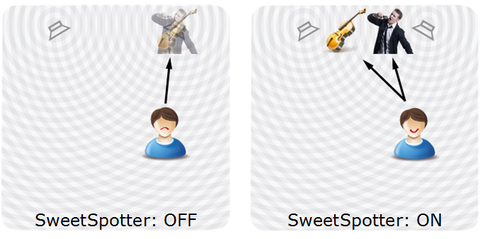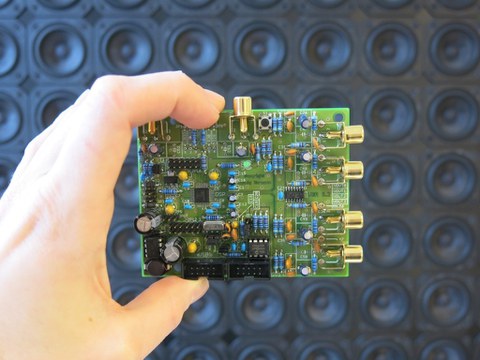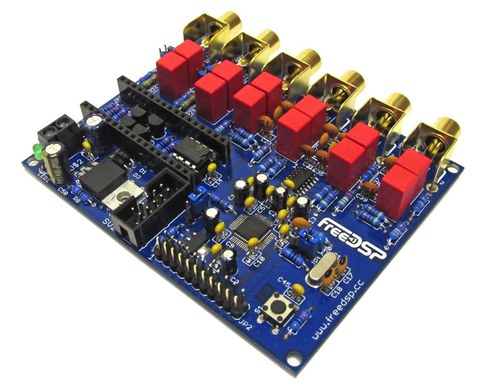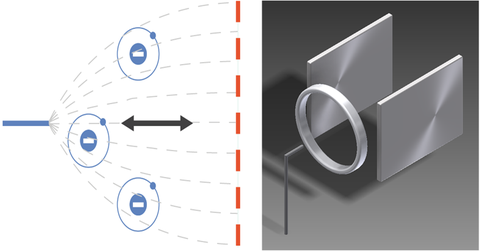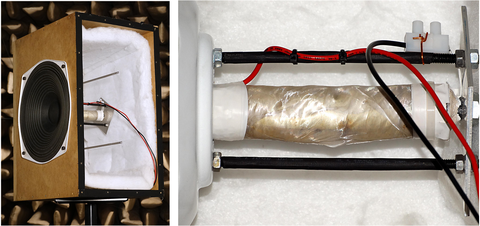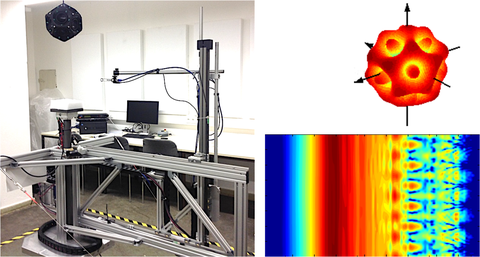Audio Reproduction Systems
The Chair of Acoustic and Haptic Engineering has been contributing to the optimization of audio reproduction systems as well as to the creation of completely new audio reproduction concepts for many years. Thereby, the holistic inclusion of the psychophysical fundamentals of the auditory perception in the technical development process is always in the foreground. In order to investigate the auditory perception in different complex reproduction situations, different systems are available in the acoustic laboratories of the Chair of Acoustic and Haptic Engineering.
The synthetic sound field in the big anechoic chamber comprises 16 loudspeakers and is used in scenarios with one or more sound sources (mono, stereo, surround sound, arbitrary single and multi-source arrangements), e.g., for the evaluation of the quality of audio reproduction or auditory spatial perception.
For investigations in more complex scenarios, the wave field synthesis system in the multimodal laboratory is utilized. It comprises about 500 circularly arranged loudspeakers and, based on the Huygensian principle, allows realistic reproduction of the sound field of almost any source arrangement.
The SweetSpotter project of the Chair of Acoustic and Haptic Engineering is an exemplary result of the psychoacoustic optimization of audio reproduction systems. A classic stereo playback system has been extended by an intelligent signal processing unit, which predistorts the two loudspeaker signals based on the results of basic investigations on auditory spatial perception. The usually narrow listening area along the main axis of the stereo system with correct phantom sound source location (so-called "sweet spot") could be significantly enlarged. This allows the listener to move in a wider range in front of the playback system without losing a correct stereo phantom sound source image. A free demo software is available for download. A current research focus of the Chair of Acoustic and Haptic Engineering is on the psychoacoustic optimization of spatial audio reproduction systems.
As part of the technical development process of modern audio reproduction systems, the Chair of Acoustic and Haptic Engineering also deals with the conception of loudspeaker arrays and corresponding signal processing algorithms. Thereby, the influence of physical limitations on the auditory perception, e.g., due to mechanical limitations in the array construction or parameter limitations in the real-time realization of the algorithms with digital signal processors (so-called "DSPs"), is always taken into account.
With the freeDSP project, the Chair of Acoustic and Haptic Engineering has developed a powerful tool for the effective design of real-time signal processing algorithms. It includes various DSP boards, as well as input and output expansion boards, programming adapters or amplifier boards. The project is constantly being extended by additional modules. The corresponding manufacturing and development data is freely available under a Creative Commons license.
Modern audio reproduction systems are often based on classical electrodynamic or electrostatic loudspeakers. However, the Chair of Acoustic and Haptic Engineering also pursues alternative transducer principles. For example, the so-called ion wind loudspeaker. Its concept is based on the generation of ions and their acceleration in an electric field (e.g., by a "tip - ring" arrangement of electrodes). These collide with other particles and an ion wind is created. If the strength of the electric field is modulated (e.g., by a deflection field generated between plates), an alternating movement and thus a sound wave can be generated. Combined with modern, fast and high-precision control and measurement technology, this approach, which dates back to the 1950s, may have the potential for use in modern reproduction systems.
The investigation of an alternative loudspeaker motor concept based on dielectric elastomers is also a research area of the Chair of Acoustic and Haptic Engineering. The extension of dielectric elastomers can be changed by an electrical voltage. If it is possible to produce strongly pronounced changes quickly and stable, this novel motor concept represents an alternative to the classic electrodynamic motor concept.
In addition, the Chair of Acoustic and Haptic Engineering investigates the acoustic optimization of bending wave loudspeakers. This loudspeaker concept is based on the excitation of a specially designed plate vibrator in one or more points with the help of electrodynamic shakers.
Bending wave loudspeakers are an alternative approach to sound generation and offer the potential to develop very flat speakers with free form. On the surface of the structures - similar to musical instruments - bending waves form, which generates sound waves with the coupled air. These waves depend, among other things, on the material, the material thickness, and the frequency.
The resultung vibration system is much more complex to describe and to optimize than conventional speakers. Optimizing these loudspeakers involve identifying the best mounting position of the exciter, panel materials, frequency response, improved acoustic efficiency and overall sound quality.
The Chair of Acoustic and Haptic Engineering deals with the optimization of bending wave loudspeaker systems with the help of modern simulation methods and precise laser measuring technology. If the audio quality of these speakers can be increased sufficiently, the unique combination of structure and transducer opens up completely new possibilities in the design of audio reproduction systems.
Besides the extensive expertise in the field of psychoacoustics, high-precision measurement equipment is also an indispensable tool for the development and verification of audio reproduction systems. Noteworthy is here the holographic measurement technology of the Chair of Acoustic and Haptic Engineering, which enables an effective verification of models and systems.
Contact
Mitarbeiter
NameMr Dr.-Ing. Sebastian Merchel
Send encrypted email via the SecureMail portal (for TUD external users only).
Professur für Akustik und Haptik
Professur für Akustik und Haptik
Besucheradresse:
Barkhausenbau, Raum BAR 59 Helmholtzstraße 18
01062 Dresden
None



